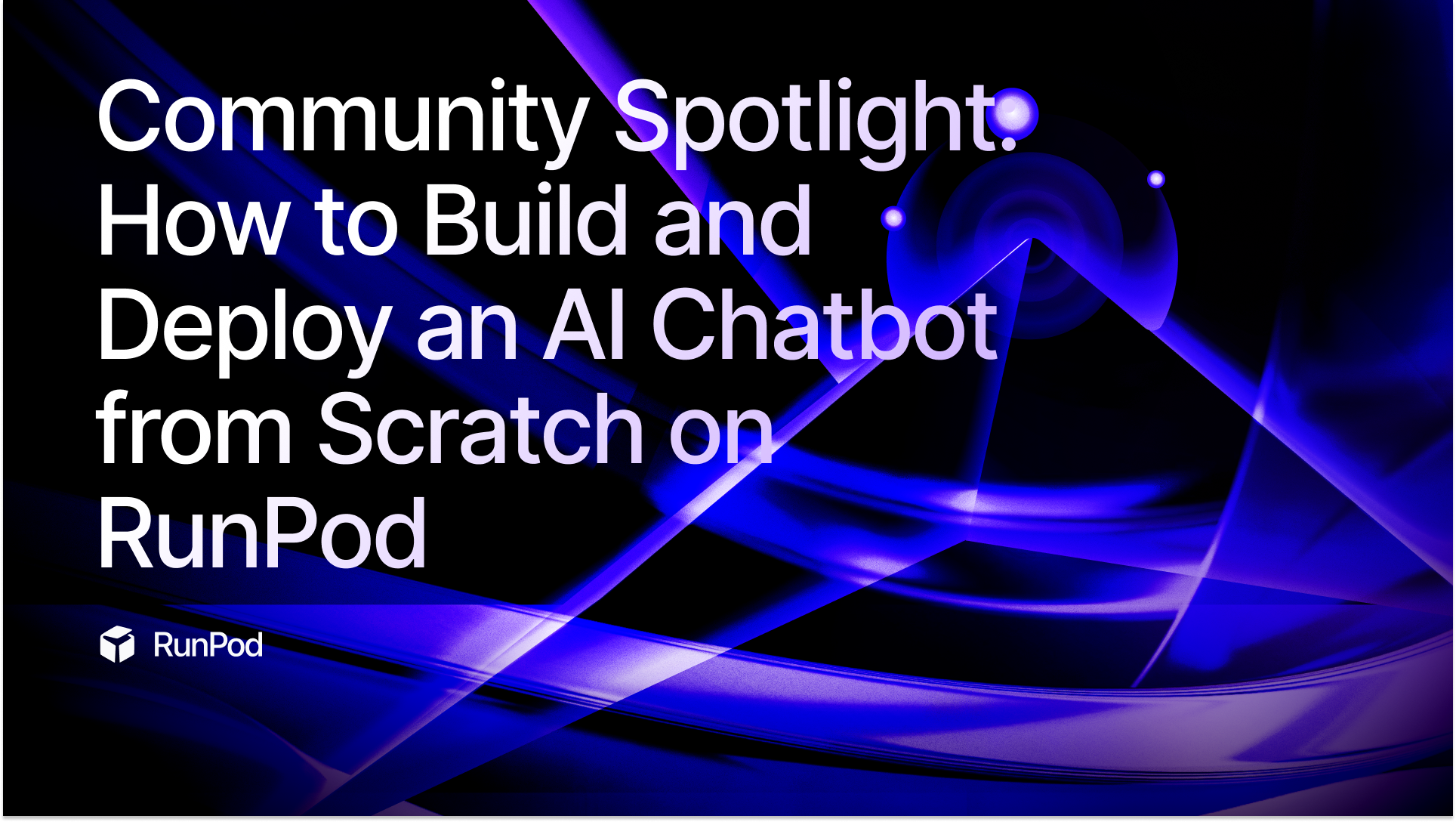Community Spotlight: How to Build and Deploy an AI Chatbot from Scratch on RunPod

In an extremely generous contribution to the RunPod community, our friends at Code in a Jiffy recently shared their journey of building a complete coffee shop application enhanced with artificial intelligence. This comprehensive project showcases how AI can transform everyday commerce applications into intelligent, interactive experiences. The video is 12 hours long and absolutely chock-full of content, and will tell you everything you need to get a chatbot deployed on RunPod, down to the barest, nuts and bolts, brass tacks details – so let's go through a summary of what you might expect to learn.
How Agentic Structures Improve The End Result
The video walks you through building a chatbot with an agentic structure for a coffee shop. Agentic structures provide LLMs with explicit frameworks for approaching tasks, similar to how humans use mental models and systematic processes. These structures can include:
- Step-by-step reasoning protocols
- Self-reflection mechanisms
- Task decomposition frameworks
- Explicit goal-setting and tracking
- Internal verification loops
At the heart of the application lies a sophisticated chatbot for a coffee shop that feels remarkably human. Unlike traditional chatbots that follow rigid scripts, this system uses multiple AI agents working in harmony - think of it as a team of specialized assistants, each expert in their domain. One agent handles orders with natural conversation, another provides product details, while a third makes personalized recommendations. There's even a "guard" agent that keeps conversations on track and relevant to the coffee shop's services. Because LLMs predict the next token based on all of the previous tokens, this can have a negative impact on output when it is fed irrelevant information, especially with the smaller, faster models that need to be used for quicker responses that may not have the same reasoning capability.
Understanding the Coffee Shop App's Technical Architecture
Frontend Core Technologies React Native forms the foundation of the mobile application, enhanced by Expo for streamlined development and deployment. The UI layer leverages Native Wind to bring Tailwind CSS-like utility styling to React Native components. User interactions are managed through React Native's Gesture Handler, while Safe Area View ensures proper layout across different device screens. For efficient list rendering, the app employs FlatList components, particularly useful for product displays and chat messages. React Native Vector Icons provides consistent iconography throughout the application, while React Native Root Toast handles user notifications elegantly.
The application implements a custom context system for cart management, utilizing React's built-in Context API. User inputs and form handling are managed through controlled components and refs, while navigation relies on React Navigation for seamless screen transitions. Real-time updates and data synchronization are handled through Firebase integration, with Axios managing HTTP requests to various endpoints.
Python serves as the backbone for backend services, with Firebase Admin SDK managing database operations and Google Cloud Storage handling image assets. The MLXtend library powers the Market Basket Analysis system, working alongside Pandas for data manipulation and analysis. Environment configurations are managed through Python-dotenv, ensuring secure credential handling. API endpoints are structured using RunPod's serverless infrastructure, providing scalable compute resources for AI operations.
If you feel unfamiliar with any of the packages mentioned above, don't worry - the tutorial absolutely tells you everything you need to know from scratch.
How RunPod facilitates the process
What makes RunPod particularly useful in the build process is the serverless architecture and API-first approach. RunPod automatically generates API endpoints to host the deployed models, which means that the app writers could focus on developing the agent logic and prompt engineering rather than getting caught up in API infrastructure. The serverless nature of RunPod's endpoints means you only pay for actual usage – when the endpoint isn't being accessed, it scales down to zero cost.
When deploying the Llama model, it was as simple as selecting the model from RunPod's Quick Deploy templates and configuring a few parameters, along with containerizing the code with Docker and providing environment variables. RunPod handled the rest, from API creation to scaling configuration. This simplicity extends to monitoring and management – the panels within RunPod provide clear usage metrics and logs, making it easy to track performance and debug issues.
Get Started Today
Here's a link to the video so you can get started building your chatbot on RunPod today:
Build something cool? Have any questions? Hop onto our Discord and let us know!
